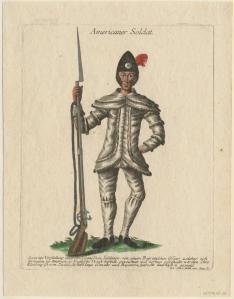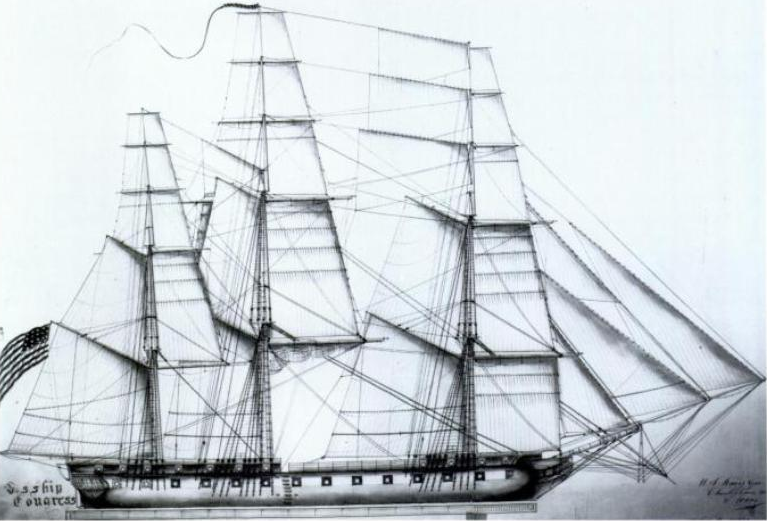McHenry wasn’t the last author to reshape the anecdote. His original notes were published in 1906 and reprinted in 1911, both times in authoritative publications. The tale those notes told was stark and simple:
A lady asked Dr. Franklin Well Doctor what have we got a republic or a monarchy. A republic replied the Doctor if you can keep it. [Footnote:] The lady here aluded to was Mrs. Powel of Philada.But when authors retold that story in the twentieth and twenty-first centuries, they added unsubstantiated details which gave new coloring to the exchange. Here’s a sampling of reteilings culled from Google.
The University of Chicago Magazine in 1940:
When the delegates were going out onto the cobble streets of Philadelphia, prepared to celebrate on “capon and wine,” as the record reads, Ben Franklin walked ahead. A window opened and a lady put her head out and said, “Dr. Franklin, what is it—a monarchy or a republic?” He stopped and said, “A republic, Madam, if you can keep it.”At the 1940 Republican Convention:
As soon therefore as the sage appeared upon the steps of this historic building a woman stepped out of the watching crowd, approached him eagerly and asked “Well, Doctor, what have we got—a republic or a monarchy?”[In 1940 Franklin D. Roosevelt’s decision to run for a third term raised the specter of monarchy again. Ironically, Powel was the person who had convinced George Washington to serve more than one term as President in 1792.]
Sarah Watson Emery, Blood on the Old Well (1963):
When a lady asked Benjamin Franklin as he left the Convention, “What have you given us, Mr. Franklin?” he replied, “A republic, Madam, if you can keep it!”At the 1968 Republican National Convention:
When they got ready to go home, Benjamin Franklin, over eighty years old, was the first to leave Constitution Hall. A concerned citizen was there and said to him, “Dr. Franklin, what have we got—a monarchy or a Republic?” Without hesitation that venerable old sage said, “A Republic—if you can keep it.”Michael P. Riccards, A Republic, If You Can Keep It (1987):
Legend has it that as the aged statesman shuffled down the streets of Philadelphia, an inquisitive woman stopped him and asked, "What have you given us?” And Franklin is supposed to have responded, “A Republic, Madam, if you can keep it.”Richard Labunski, James Madison and the Struggle for the Bill of Rights (2006):
The story is told that when Franklin left the Assembly Room, a woman approached him and asked, “Well, Doctor, what have we got, a republic or a monarchy?” To which Franklin replied, “A republic, madam, if you can keep it.”Walter Isaacson, Benjamin Franklin: An American Life (2003):
According to a tale recorded by James McHenry of Maryland, he [Franklin] made his point in a pithier way to an anxious lady named Mrs. Powel, who accosted him outside the hall. What type of government, she asked, have you delegates given us? To which he replied, “A republic, madam, if you can keep it.”Eric Metaxas, If You Can Keep It (2016):
McHenry wrote that when Benjamin Franklin emerged from the building that day, he was accosted by a certain Mrs. Powell of Philadelphia. Whether she was a young women or a dowager we don’t know. He was then eighty-one years old, the oldest delegate. . . . for all we know, he knew this now-mythical and otherwise forgotten Mrs. Powell, who has come to stand for all of America since the day when she spoke to Franklin in a tone that seems to bespeak some degree of familiarity.What are the major trends in these retellings?
According to McHenry, Mrs. Powell put her question to Franklin directly: “Well, doctor,” she asked him, “what have we got? A republic or a monarchy?“
Franklin, who was rarely short of words or wit, shot back: “A republic, madam—if you can keep it.”
- Powel’s position as wife of a Philadelphia politician, host of important political discussions, and trusted advisor to Washington is erased. She instead appears as a “concerned citizen,” “inquisitive woman,” or “anxious lady”—plus “now-mythical.”
- The exchange, rather than happening in Powel’s salon, takes place out in the street, sometimes with a crowd watching. The woman’s role is often transgressive. In one case, she calls out her window. In two others she “accosted” the elderly Franklin with her question.
- In a couple of versions, Powel doesn’t ask, “What have we got?” but “What have you given us?” That suggests a top-down grant to the nation from the delegates rather than a milestone in an ongoing political process.
- Powel’s original worry about “a republic or a monarchy” is dropped, as in McHenry’s own retellings, in favor of worry about the fragility of republics.












